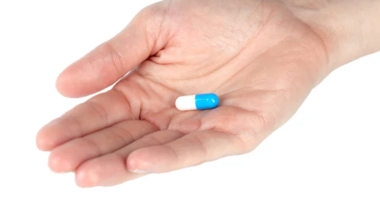Why covid patients who could most benefit from paxlovid still aren’t getting it – The reason why Covid patients who could benefit the most from Paxlovid are not receiving it is multifaceted. Several factors contribute to this issue, including:
High Cost: The price of Paxlovid has increased significantly since Pfizer shifted to commercial sales, making it unaffordable for many individuals. This price barrier prevents those in need from accessing the medication.
Lack of Awareness: Many patients who qualify for free doses of Paxlovid under government programs are unaware of this option or how to obtain it. This lack of awareness hinders eligible individuals from receiving the medication.
Complex Prescribing Process: Prescribing Paxlovid can be challenging due to potential interactions with other medications and the need to initiate treatment within a specific timeframe after symptom onset. This complexity, coupled with limited awareness of the drug’s benefits, leads to underutilization.
Misinformation and Skepticism: Misinformation about Paxlovid’s efficacy and safety, along with skepticism towards government health programs, contributes to a lack of trust and understanding among patients. This, in turn, affects their willingness to seek out and use the medication.
Efforts are ongoing to address these barriers and increase access to Paxlovid for Covid patients who could benefit from its therapeutic effects. By raising awareness, simplifying the prescribing process, combating misinformation, and ensuring affordability, more individuals can potentially benefit from this antiviral treatment.
What are the eligibility criteria for Paxlovid treatment?
The eligibility criteria for Paxlovid treatment include the following key points:
Positive Covid-19 Test: Patients must have tested positive for SARS-CoV-2 to be eligible for Paxlovid treatment.
Mild to Moderate Covid-19: Paxlovid is indicated for the treatment of mild-to-moderate Covid-19 in adults and pediatric patients aged 12 years and older, weighing at least 40 kg.
High Risk for Severe Covid-19: Eligible patients are those at high risk for progression to severe Covid-19, including hospitalization or death, and who meet the current Priority Eligibility Criteria.
Risk Factors: Patients with one or more risk factors for severe Covid-19 are considered eligible for Paxlovid treatment.
Age Requirement: Patients must be at least 18 years old or over 12 years of age and weigh at least 40 kg to qualify for Paxlovid treatment.
It is essential for healthcare providers to comply with the requirements outlined by the US Food and Drug Administration’s Emergency Use Authorization for Paxlovid and the specific eligibility criteria set by their state when prescribing this medication. Additionally, patients should be informed about the importance of initiating Paxlovid treatment as soon as possible after diagnosis of Covid-19 and within 5 days of symptom onset to maximize its effectiveness in combating the virus.
What are the challenges in distributing Paxlovid to high-risk patients?
The challenges in distributing Paxlovid to high-risk patients include:
Limited Supply: The availability of Paxlovid has been constrained, with the federal government only able to release a small number of courses to state health departments. This limited supply hampers the distribution of the medication to those who need it most.
Complex Distribution Process: The distribution process for Paxlovid involves the federal government apportioning the supply to state health departments, which then distribute it to local pharmacies, health systems, and long-term care facilities. This decentralized approach has led to variations in distribution strategies across different states, creating inconsistencies and challenges in ensuring equitable access.
Prescribing Hesitancy: Some healthcare providers are reluctant to prescribe Paxlovid due to concerns about potential side effects or outdated beliefs, such as the notion of “Paxlovid rebound.” This hesitancy contributes to underutilization of the medication and poses a barrier to high-risk patients receiving timely treatment.
Lack of Awareness: Despite the effectiveness of Paxlovid, there is a lack of awareness among both healthcare providers and patients about its benefits and eligibility criteria. This lack of knowledge can result in missed opportunities for high-risk individuals to receive the medication.
Efforts are needed to address these challenges by increasing the supply of Paxlovid, streamlining the distribution process, educating healthcare providers about the drug’s efficacy and safety, and raising awareness among patients about their eligibility for treatment. By overcoming these obstacles, more high-risk patients can access Paxlovid and benefit from its potential to reduce severe outcomes associated with Covid-19.
What are the alternatives to Paxlovid for covid-19 treatment?
1. Lagevrio (Molnupiravir): This oral medication is an alternative for individuals who cannot take Paxlovid. While it is better tolerated with fewer drug interactions, it is less effective than Paxlovid, with about a 30% efficacy rate in reducing hospitalization or death due to COVID-19. It needs to be taken within five days of symptom onset and twice daily for five days.
2. Veklury (Remdesivir): This intravenous treatment, now FDA-approved for outpatient use, is an alternative for those who cannot take Paxlovid but require a treatment with more than a 30% efficacy rate. It is logistically challenging as it requires an IV infusion for three consecutive days but is considered equally as effective as Paxlovid.
3. Monoclonal Antibody Treatment: While not as effective against new COVID-19 variants, monoclonal antibody therapy was a mainstay in the early stages of the pandemic. However, due to evolving variants, its effectiveness has diminished. Currently, Paxlovid and Veklury are recommended as effective alternatives for COVID-19 treatment.
4. Convalescent Plasma: This treatment involves using plasma from individuals who have recovered from COVID-19 and contains antibodies against the virus. While it was initially used as a treatment option, its efficacy has been debated, and it is not as commonly recommended compared to newer antiviral medications like Paxlovid and Molnupiravir.
5. Steroids (e.g., Dexamethasone): Steroids like dexamethasone have been used in severe cases of COVID-19 to reduce inflammation and improve outcomes. They are typically recommended for hospitalized patients with severe respiratory symptoms but may not be suitable for all individuals with COVID-19.
6. Supportive Care: For mild cases of COVID-19, supportive care such as rest, hydration, and over-the-counter medications to alleviate symptoms like fever and cough may be sufficient. Monitoring symptoms closely and seeking medical attention if they worsen is crucial in managing the illness effectively.
ALSO READ: 5 Best Strength Workouts to Sculpt a Lean Upper Body









